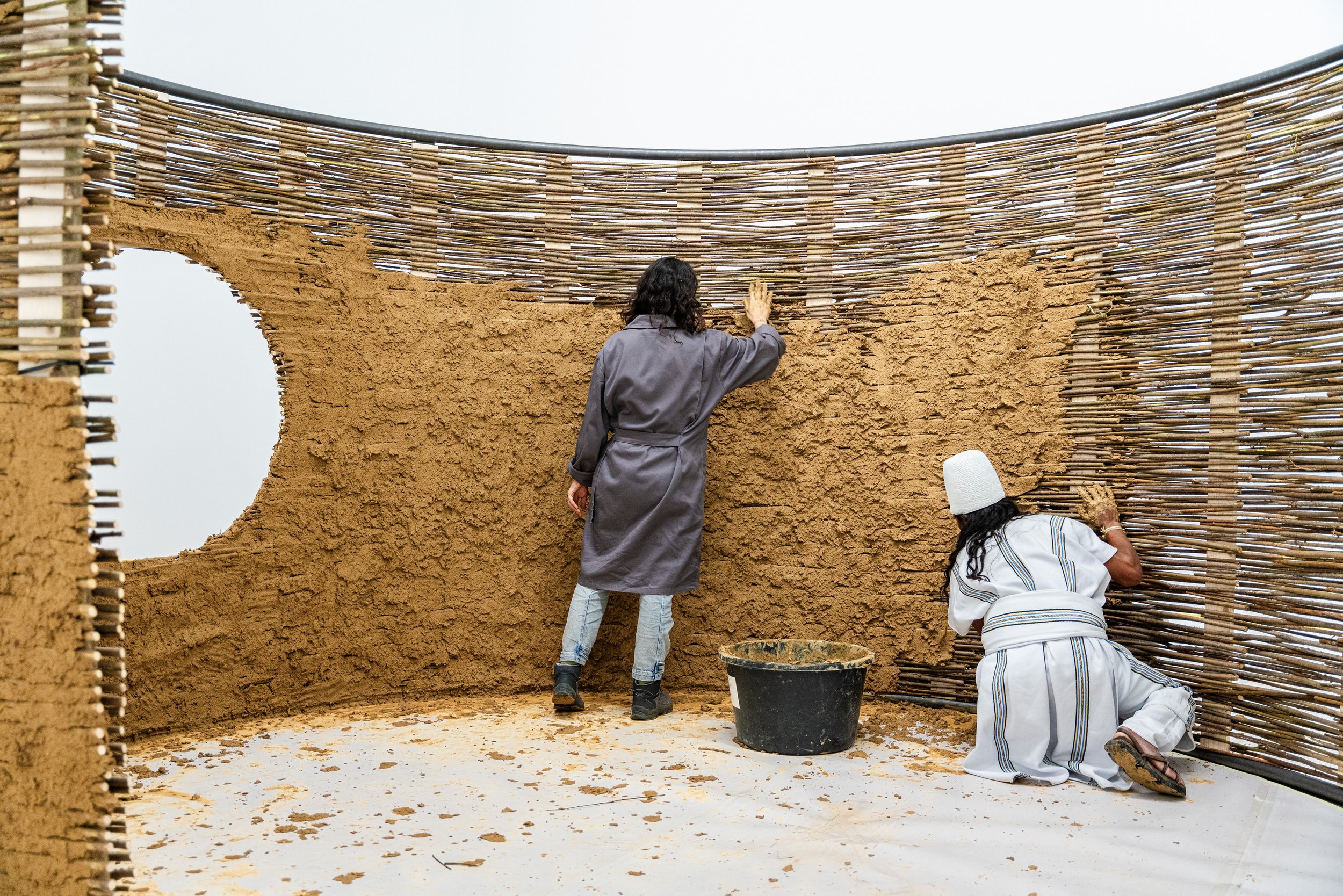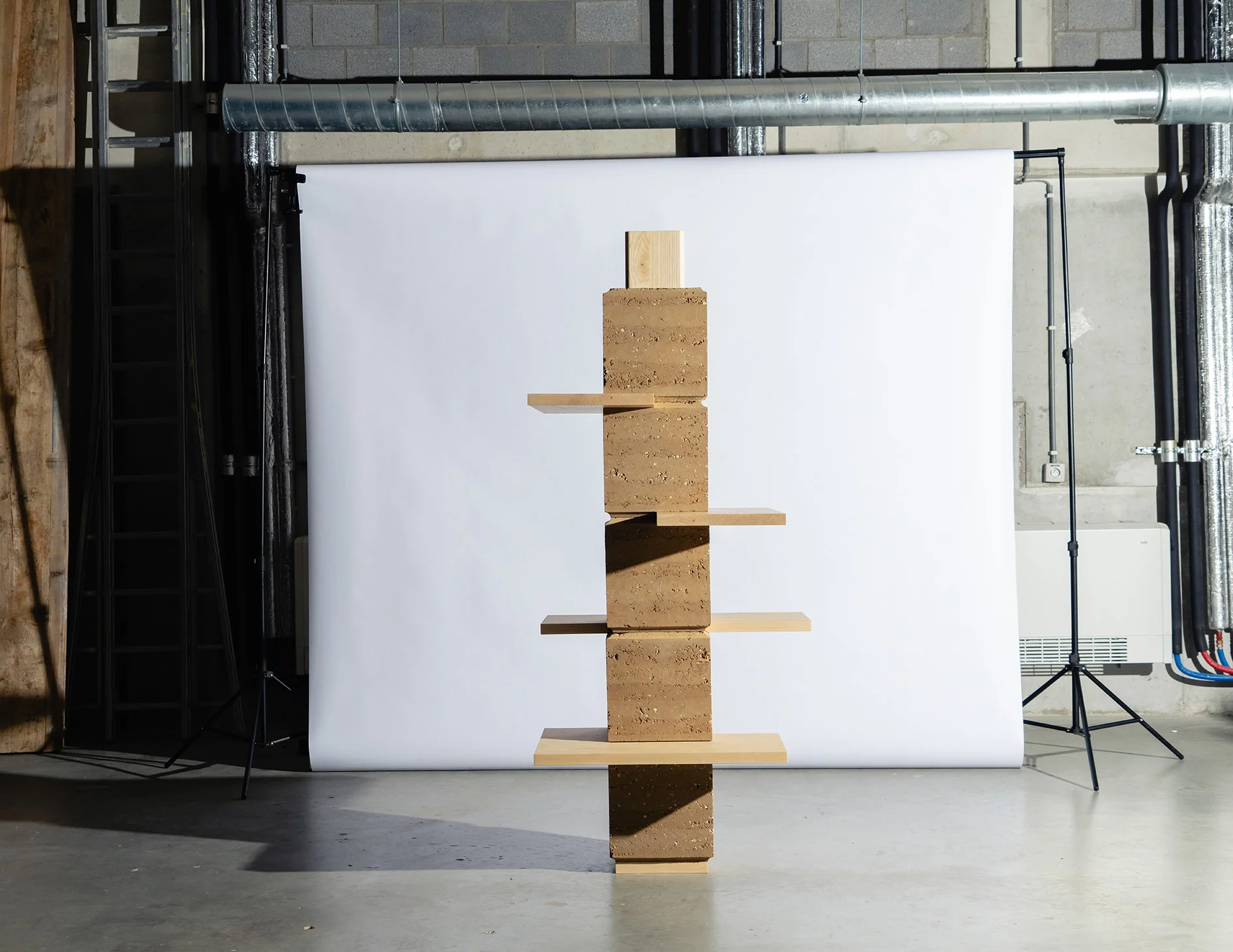Cherished Earth
When was the last time you fully took note of the ground beneath your feet or admired the texture of the earth in which we exist upon between your fingertips?
In ever-increasingly urban environments, it’s sometimes difficult to fully appreciate the planet for what it truly is. Centuries of construction have created layers of humanmade crusts, with buildings atop that mask or entirely obscure the natural materials that make up the earth's surface below. Aside from outdoor sporting events, or those lucky enough to have a garden, we tend to alienate ourselves from soil the moment we are told by society that playing in the mud is a childish pursuit.
Studio Eidola
But as with many children’s playtime activities, there is much we adults can learn from once again pressing our hands into the dirt, not least that it is a living organism, teeming with life. Much like the skin of our own bodies, it acts as a barrier and interface with the rest of the world, telling a story of what lies beneath, and as such, is a vital organ of the natural world. Therefore, it is not only a thing to be cherished, but nurtured and protected.
It was clearly something on the minds of a number of designers partaking in this years Dutch Design Week, largely in response to an influx of reports suggesting an alarming rise in soil degradation across the planet due to overfarming and the effects of climate change.
The Matter We Share
As the title suggests, the Van Abbe Museum dedicated its entire Soils exhibition to the topic, inviting international artists and designers to produce work that explores our relationship to soil. Posing the poignant and timely question, “How can we take care of soil, just as the soil cares for us?”, the exhibition acted as a plea for us to reconnect with the earth and create a more symbiotic relationship akin to that experienced by our ancestors. Steffie De Gaetano and Giulia Pompilj’s project The Matter We Share bears witness to the Dommel River, which flows right past the museum and has been shown to be polluted by human industry. Stretching out across a long canvas, the work draws together the river’s soil compounds and pollutants, which through chromatographic exposure, makes years of heavy metal contamination visible in a beguiling, colour-merging pattern.
Weaving a Pluriversity
Soil itself was also used as a raw building material in Weaving a Pluriversity by the Pluriversity Weavers. The spiral structure, which was inspired by a Casa Marunzama traditionally built by the Iku people of Colombia, was constructed by pressing soil into a woven wooden frame. The vernacular building practice is said to weave together people with the land via living materials, with the piece literally bringing Columbian and Dutch materials and people together in its development.
Looking beyond soil as a construction material alone, Atelier NL championed soil’s impact in shaping the land of the Netherlands, with an exhibition in collaboration with Meanderende Maas. Visitors to Bergmannkerk church were greeted by a vast mound of earth in the centre of the space, with various display areas and pieces of signage dotted in and around the pile. The soil was excavated during a widening of the Maas river, a regular undertaking in protecting the humanmade Dutch landscape. The Meanderende Maas project proudly does so with the restoration of the land and its ecosystems in mind, working with rather than trying to control the flow of the river. Atelier NL told the story of this intertwined relationship through the eyes of a dike warden, a contractor, a walker, and a stork perched by the riverbank which brought to life their showcase of beautiful, timeless objects created from the earth.
Under Scorched Earth
Tools of Rekindling was another exhibition that centred “on the act of harvesting, redefined not only as a method of extraction but as a form of activism that reshapes our relationship with local environments.” Curated by Elena Genesio and Emmie Massias, it delved “into the ethical dilemmas surrounding the mining of natural resources, blurred practices of land management, and the shifting value of raw materials in globalised economies.” While a group show, the curator's own research project, Under Scorched Earth, investigates the properties of wild clay and volcanic stone foraged from various sites across Sicily, an area known for its ceramics, as well as tourism. Comprised of a series of experiments forged from earthen materials, the project investigates the dynamics between drought, tourism, and land management which has uncovered, “the complex historical and territorial dynamics impacted by shifting climates and their direct influence on both the environment and the region's industrial development.”
Fluid Residuum
The by-products of industrial manufacturing are scrutinised by Studio Eidola with Fluid Residuum, a project that challenges the perceived waste value of gravel quarry silt. Traditionally this leftover of the gravel industry is used as a non-hazardous landfill material, but through experimentation in the kiln, Studio Eidola has found alternative uses for the earthware. Inspired by the weathered appearance of the discarded material it is sculpted into raw forms that are fired to create hardly blocks, which are then joined using melted recycled tin to form pedestals.
Rack
Cas Reynders, another exhibitor in Tools of Rekindling, also seeks to move away from heavy industrialisation and reimagine how we make things, instead reforming connections between communities, their local traditions, materials and heritage. Once again, soil plays a central role in this pursuit, with traditional rammed earth techniques used to produce minimal, contemporary furniture that straddles our perceived notions of past and future.
All of these projects draw attention to the narrative we all share with the soil that surrounds us, and the potential this awareness has to bring us all together. As the team behind Tools of Rekindling so aptly put it, we have the chance “to envision a future where our relationship with soil is not defined by exploitation but by collective engagement, resilience, and the fostering of regenerative material cycles in post-industrial economies.”
This article was first published by Design Inside.







